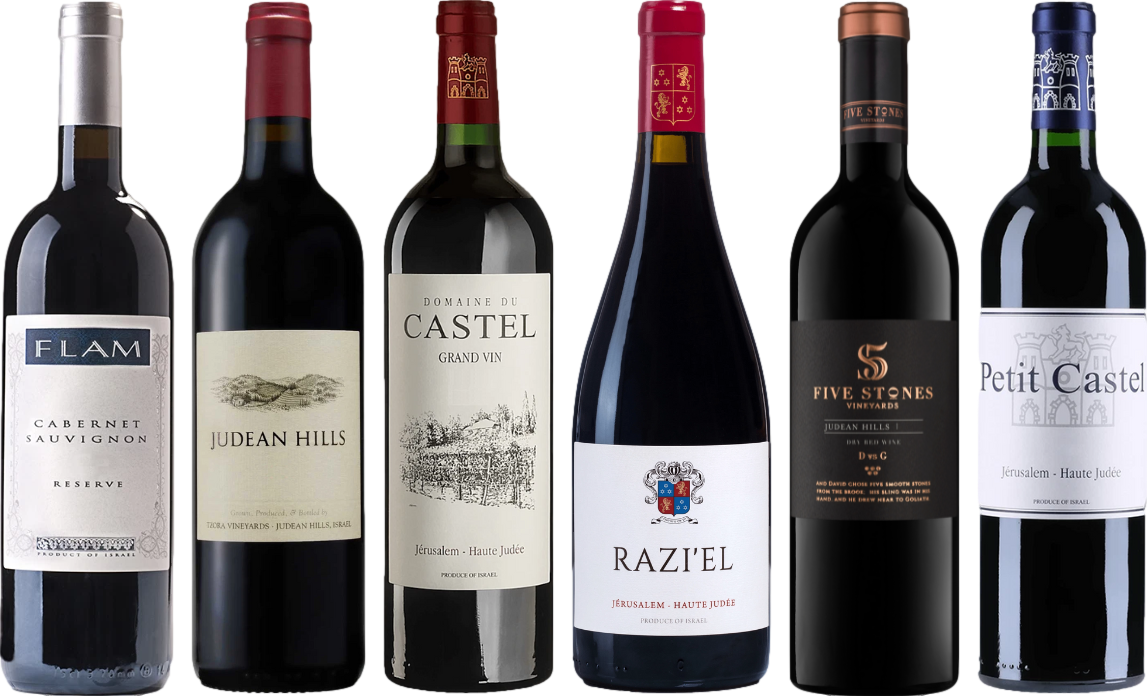



For most varieties, allowing it to open up for 30 minutes to 2 hours can enhance the overall experience. This duration lets the complex aromas and flavors develop, revealing the wine’s true character. However, younger selections, particularly those with more tannins, may benefit from a longer exposure, sometimes up to 4 hours.
It’s essential to consider the specific type of bottle you’re working with. For instance, bold and full-bodied varieties usually require more time to soften and express their layers. In contrast, lighter styles may only need a brief period to achieve their optimal state. Experimenting with various durations can help you discover the perfect balance that suits your palate.
As a recommendation, if you’re uncertain about the ideal exposure time, start with 1 hour and taste periodically. This allows you to assess the evolution of flavors and aromas, leading to a more personalized experience. Remember, the goal is to enjoy every sip, so trust your senses and adjust accordingly.
Optimal Aeration Time for Your Favorite Pour
For most varieties, allowing 30 minutes to 1 hour enhances the overall experience. However, some full-bodied selections can benefit from up to 2 hours of exposure to air.
Consider the following guidelines based on specific types:
- Light-bodied options: 20 to 30 minutes is sufficient.
- Medium-bodied selections: Aim for 30 to 45 minutes.
- Full-bodied wines: 1 to 2 hours will yield the best results.
To maximize flavor development, pour the liquid into a decanter. This increases the surface area, promoting oxygen interaction. If a decanter isn’t available, simply using a wider glass can achieve similar effects.
Be mindful that exposure to air can also lead to unwanted oxidation, altering taste over time. Monitor the progression and enjoy your pour while it’s at its peak.
Ultimately, personal preference plays a significant role. Experimentation will guide you in finding the perfect duration for your palate.
Understanding the Importance of Aeration for Red Wine
Allowing exposure to air enhances the aromatic quality and flavor profile of this beverage. This process can significantly soften tannins and promote the release of volatile compounds, which are essential for a fuller experience. For optimal results, consider decanting the liquid into a vessel designed for aeration. A decanter increases surface area, allowing for more efficient interaction with oxygen.
Timing is critical. While some varieties benefit from just a short period of aeration, others may require several hours to reach their peak expression. For instance, young, tannic versions often flourish with extended exposure, while older bottles may only need brief contact to avoid losing delicate nuances. Monitor the development of flavors over time to determine the ideal duration based on personal preference.
Temperature also plays a vital role. Serving at the appropriate temperature can enhance the overall tasting experience. Slightly warming the beverage can encourage aromas to open up, while cooler temperatures may suppress certain flavors. Aim for a balance that complements the characteristics of the specific type.
Engaging the senses during this process is invaluable. Swirling the liquid in the glass can help release aromas, providing a more immersive experience. Take time to observe the color, swirl gently, and inhale the scents. This practice not only enhances enjoyment but also enriches the understanding of how aeration impacts the overall profile.
Ultimately, this practice is about exploration and personal discovery. Each bottle offers a unique journey, revealing different aspects through exposure to air. Embrace the process, experiment with various techniques, and find what resonates best with your palate.
Factors Influencing Aeration Time for Different Red Wines
For optimal results, consider the grape variety as a primary factor. Lighter varietals, such as Pinot Noir, typically require a shorter exposure to air, around 30 minutes. In contrast, more robust selections like Cabernet Sauvignon can benefit from an hour or more, allowing their tannins to soften.
Age plays a significant role as well. Younger selections are often more tannic and may need additional aeration to reveal their complexity. Conversely, well-aged bottles, particularly those over ten years, may only need brief exposure, as they have already developed nuanced flavors.
Additionally, the wine’s production method impacts its air requirements. Natural wines, with minimal intervention, might have higher levels of volatile compounds that can dissipate quickly, suggesting a shorter aeration period. On the other hand, wines that underwent extensive oak aging often require more time to harmonize their flavors.
The serving temperature is also crucial. Wines served too warm may release aromas too rapidly, while those served too cold can mask their characteristics. Slightly cooler temperatures can enhance the tasting experience, aiding in the gradual unveiling of flavors during aeration.
Lastly, personal preference should guide the aeration process. Some enthusiasts enjoy the evolution of flavors over time, while others prefer the fresh vibrancy of a newly opened bottle. Taste periodically to determine when the wine has reached its ideal state.
Recommended Breathing Times for Popular Red Wine Varieties
Cabernet Sauvignon typically benefits from 30 to 60 minutes of exposure to air, enhancing its bold flavors and tannins. Merlot, being softer, requires around 15 to 30 minutes to reveal its fruitiness without overwhelming the palate. For Pinot Noir, a delicate varietal, a gentle aeration of 20 to 40 minutes allows its nuanced aromas to flourish.
Syrah, known for its robust profile, thrives with 30 to 45 minutes in an open vessel, which helps soften its intensity. Tempranillo, particularly from Rioja, can be enjoyed after 30 minutes, providing a balance between its earthy notes and fruit. Zinfandel, with its jammy characteristics, benefits from about 20 to 30 minutes, allowing its spice and fruit flavors to shine.
Malbec, with its rich texture, often requires 30 minutes to fully express its dark fruit essence. Sangiovese, the backbone of Chianti, is best enjoyed after 30 to 60 minutes of aeration, enhancing its cherry and herbal nuances. Finally, Grenache, with its ripe berry flavors, typically needs around 20 to 40 minutes for optimal enjoyment.
Signs That Your Red Wine Has Breathed Enough
Look for a noticeable improvement in aroma and flavor. When the bouquet becomes more pronounced and complex, that’s a good indicator of adequate exposure to air.
The texture should feel smoother on the palate. If tannins soften and the mouthfeel becomes more rounded, the drink is likely ready for enjoyment.
Observe color changes. A brightening of the hue can signify that the oxidation process is enhancing the overall profile.
Pay attention to the finish. A longer, more pleasant aftertaste suggests that the liquid has reached a desirable state.
Check for any unwanted aromas. If any off-putting scents dissipate, it’s a sign that the aeration process is working effectively.
| Indicator | What to Look For |
|---|---|
| Aroma | Complex and pronounced scents |
| Texture | Smoother, rounded mouthfeel |
| Color | Brightening of hue |
| Finish | Longer, pleasant aftertaste |
| Off-Aromas | Disappearance of any unpleasant scents |
Common Myths About Red Wine Aeration Debunked
Many believe that exposing wine to air always enhances its profile, but this isn’t universal. Here are some prevalent misconceptions clarified:
1. All Wines Benefit from Aeration
Not every bottle requires a lengthy exposure. Older vintages or delicate varietals can suffer from excessive oxidation. Always know your wine’s age and style before deciding on aeration time.
2. The Longer, the Better
While some wines thrive with extended aeration, others may lose their character. A few hours can be ideal for certain robust reds, but excessive air can dull flavors. Trust your palate and taste periodically.
3. Decanters are Mandatory
Using a decanter can enhance aeration, but it isn’t necessary. Simply pouring wine into a glass can suffice. The key is to increase surface area, which can be accomplished in various ways.
4. Aeration Fixes Faulty Wines
Though aeration can soften harsh tannins, it won’t rectify fundamentally flawed wines. A corked bottle or one with excessive acidity won’t magically improve with air exposure.
5. Aeration is Only for Reds
White wines, particularly fuller-bodied varieties, can also benefit from a bit of air. Don’t overlook the potential of whites to develop complexity with a little time in the glass.
Pairing wines with food enhances the dining experience, and knowing the right way to serve them can elevate the meal. For instance, if you’re interested in mastering meat preparation, consider checking out this guide on how to cook lamb steaks in ninja air fryer.
Understanding these myths can lead to a more enjoyable wine experience and help you appreciate the nuances each bottle offers.
Practical Tips for Aerating Wine at Home
Use a decanter for optimum exposure to air. Pouring the liquid into a decanter increases the surface area, allowing for faster oxidation. Aim for a wide-bottomed design to maximize contact with oxygen.
Consider using an aerator if you’re short on time. These devices are designed to enhance the aeration process during pouring, providing immediate benefits without the need for lengthy waiting periods.
For a simple technique, pour the drink into your glass and gently swirl it. This motion incorporates air, helping to release aromas and soften tannins effectively.
Serve at the right temperature. Slightly warmer temperatures can facilitate the release of aromas, while cooler temperatures can mute flavors. Generally, aim for slightly below room temperature for optimal results.
Storage matters. If you have leftover liquid, recork it and store it upright to minimize oxidation. Consider using a wine preservation system to extend its life and maintain flavor integrity.
Experiment with timing. Each variety reacts differently, so try various methods and durations to find what suits your palate best. Taste periodically to identify the perfect moment when the flavors align.
Lastly, trust your senses. Pay attention to the aromas and flavors as they evolve. If it smells and tastes better, then it’s ready to enjoy!
FAQ:
How long should red wine breathe after opening to enhance its flavor?
Red wine typically benefits from breathing for about 30 minutes to 2 hours after opening. The process allows oxygen to interact with the wine, which can help soften tannins and release aromatic compounds. Lighter red wines might need only 30 minutes, while fuller-bodied wines can be left to breathe for up to 2 hours. It’s best to taste the wine periodically during this time to determine when it reaches your preferred flavor profile.
Does the type of red wine affect how long it should breathe?
Yes, the type of red wine does influence the breathing time. Lighter reds, such as Pinot Noir, generally require less breathing time, often around 30 minutes. In contrast, heavier reds like Cabernet Sauvignon or Syrah can benefit from 1 to 2 hours of aeration. The reason is that fuller-bodied wines usually have more tannins and complex flavors that take longer to mellow and open up. Always consider the specific characteristics of the wine you are consuming.
Can I use a decanter to help my red wine breathe faster?
Using a decanter can significantly speed up the breathing process for red wine. When you pour wine into a decanter, it increases the surface area exposed to air, allowing for quicker oxidation. This method can reduce the necessary breathing time to as little as 15-30 minutes, depending on the wine. Decanting is especially beneficial for young or tannic wines, as it can help soften their flavors and enhance the overall drinking experience.
What are the signs that red wine has breathed enough after opening?
Signs that red wine has breathed sufficiently include a noticeable change in aroma and flavor. You might detect greater complexity in the scent, with fruit notes becoming more pronounced and any harsh tannins softening. Tasting the wine is the best way to determine its readiness. If the wine tastes balanced and harmonious, it has likely breathed enough. If it’s still too tight or harsh, giving it more time is advisable.










